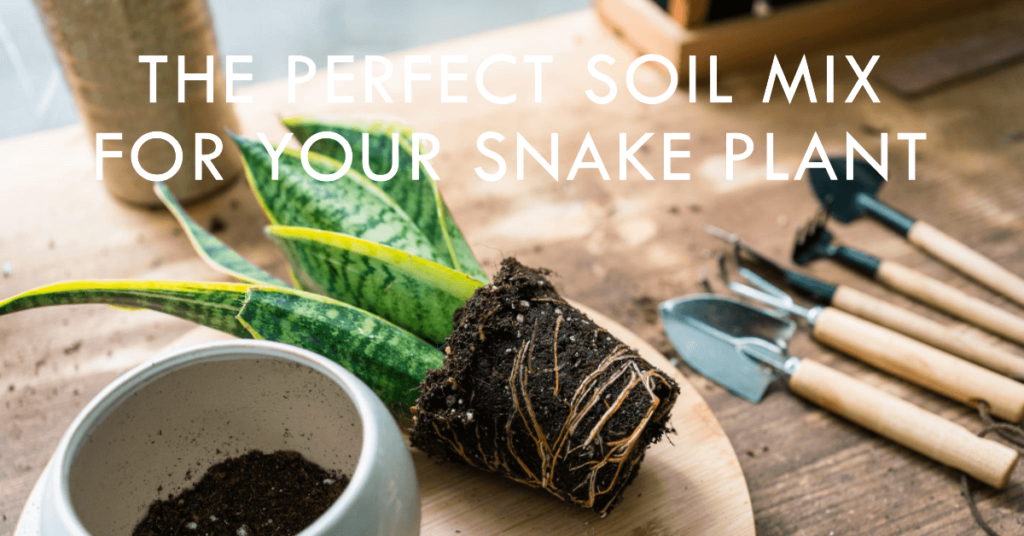Best Soil for Snake Plant
Introduction to Snake Plants
There is no doubt about the love of humans for all that is unique and beautiful. The snake plant, scientifically known as Sansevieria, is no exception. It is a popular houseplant known for its hardiness and low maintenance requirements. Native to West Africa, this plant has become a favorite among both novice and seasoned gardeners. But, like all plants, the snake plant thrives best when it feels at home, that is when planted in the right type of soil. But the question is: what soil for snake plants should you use? Stay with us to find the answer.
Why Soil Matters
Soil plays a pivotal role in the health and growth of a snake plant; although, it does not mean that soil is not as important to other plants or living beings.
Nutrients: Many plants rely on soil to get the nutrients they need. Without the proper soil, the plant cannot get the nutrients it needs, and it won’t thrive or even survive.
Supporting the Root: While we humans stand on our legs in order to stand upright, plants rely on their roots. Soil acts as a supportive element for the roots, keeping them in one place and allowing the plant to stand upright.
Proper Drainage: This affects both plants and every other living creature directly. Soil acts as a natural drainage, allowing water to pass the surface to lower levels. When it comes to nature, without this drainage, we could see massive floodings that would bring chaos to society and destroy all the plants and trees. In a home setting, without this feature, water would stay on the surface and not go down. That would mean the plant won’t have access to it.
Gaseous Exchange: There are countless living creatures that tend to live in soils. They rely on the roots of plants to exchange the air in the soil with the one out in the atmosphere so they always have access to fresh air.
Moisture: Moisture plays two important roles. First, in order to absorb many of the nutrients the plant needs, it requires moisture. It cannot absorb them from dry soil. Second, moisture helps gaseous exchange and allows the roots to “breathe.”
The right soil can make the difference between a thriving snake plant and one that struggles to survive.
Key Components of the Ideal Soil
What we mentioned above about soil are only a few reasons why its presence is vital to plants. However, every plant has a different living condition and thus may require different things from the soil and in different quantities.
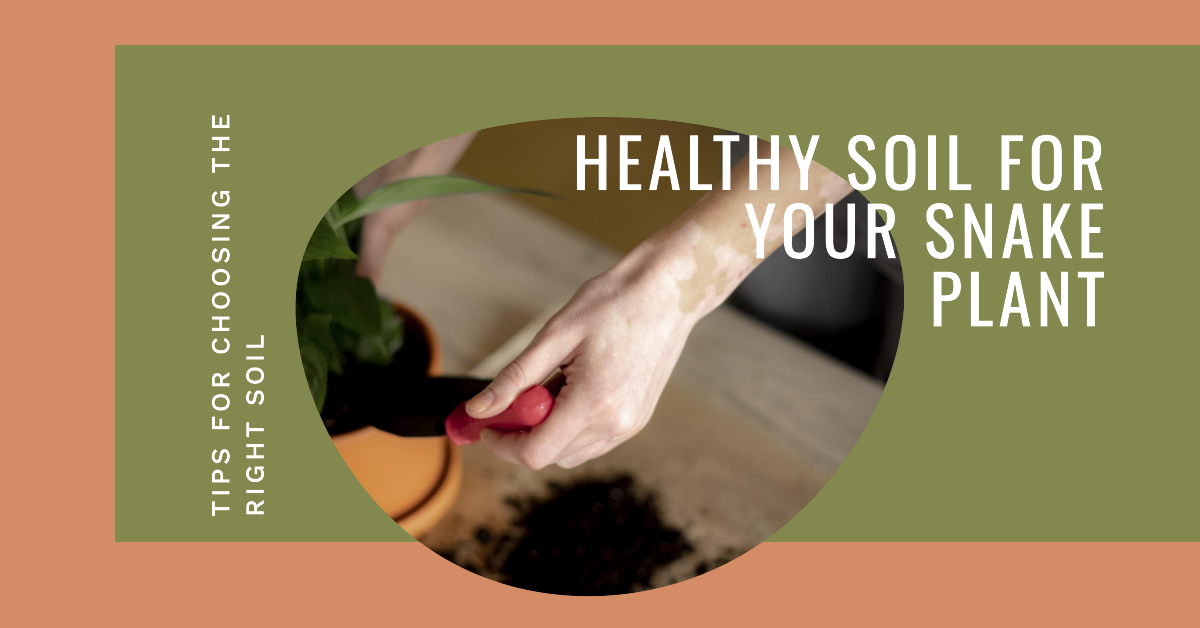
Basic Properties of Soil for Snake Plant
Understanding the fundamental properties of soil for snake plants is crucial. Here’s a breakdown:
- Well-drained: Snake plants belong to the Dracaena family, a type of succulent. Native to arid regions, they prefer dry, well-draining soil. Soggy soil can harm your snake plant.
- Aeration: The plant’s roots need space to breathe. Compact soil can suffocate the roots, affecting the plant’s growth.
- Nutrient-rich: Every plant requires specific nutrients to flourish. Think of these nutrients as vitamins and minerals essential for the plant’s health.
Drainage Capabilities
One of the most crucial factors for snake plant soil is its drainage capabilities. Snake plants are hardy plants that can survive for a long time without water. That means they are susceptible to root rot, which occurs when the roots sit in water for extended periods. A well-draining soil prevents this by allowing excess water to flow away from the plant’s roots. What most matters for the plant here is the soil keeping a certain amount of moisture.
pH Levels
Snake plants prefer slightly acidic to neutral pH levels, ranging from 6.0 to 7.5. This pH range ensures the plant can absorb essential nutrients from the soil effectively. Remember that over-watering the soil will also change the pH levels, bringing it more toward the neutral levels.
Nutrient Content
While snake plants are not particularly fussy about nutrients, they do benefit from soil rich in essential minerals like potassium, phosphorus, and nitrogen. Not that it’s anything strange. Most plants would benefit from having a might amount of the said minerals in the soil.
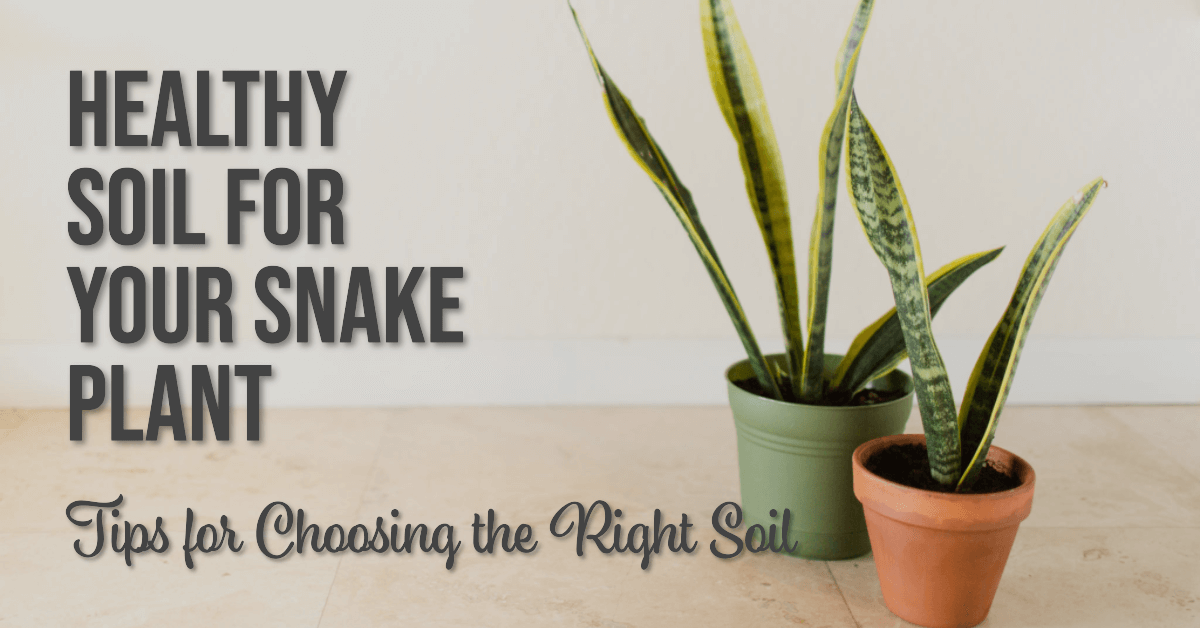
Types of Soil Suitable for Snake Plants
There are many types of soil out there, each with its own features. Some have better water drainage; some might be able to hold moisture for a longer time, and some might be known for their nutrient values. Sometimes, it’s possible to create something with all these features by combining different soils.
Cactus and Succulent Mix
This type of soil mix is designed for plants that require excellent drainage, making it ideal for snake plants. It often contains sand, perlite, and other components that promote aeration and prevent water-logging. Aeration is the process by which roots are allowed to breathe deep down in the soil. Air is dissolved in the water and that water remains as moisture in the soil, allowing the roots to breathe.

Using Cactus Soil for Snake Plants
Cactus and succulent soil are one of the options available to be used for snake plants; however, it often lacks organic matter. To remedy this, mix:
- 2 parts of cactus soil
- 1 part peat moss
- A handful of compost
This combination ensures the soil retains essential nutrients and moisture.
Sandy Loam Soil
As we said earlier, snake plants don’t need constant watering. It means that their roots don’t like too much water for too long around them. Sandy loam is a well-draining soil that retains just enough moisture for the snake plant’s needs without causing root rot. It is safe to say that it is a balanced mix of sand, silt, and clay.
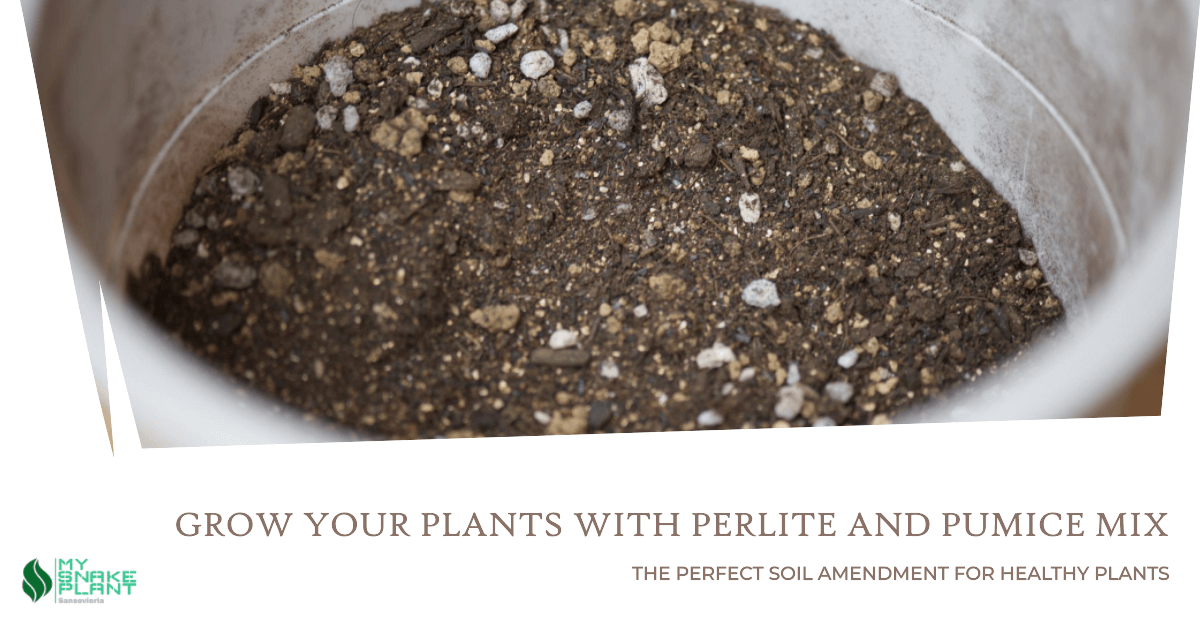
Perlite and Pumice Mix
Adding perlite or pumice to your soil can enhance its drainage capabilities. These materials are porous, allowing water to flow through easily, reducing the risk of over-watering.
Readymade Soil Mixes for Snake Plant
Now, let’s see what soil is best for snake plants. If you’re looking for a quick solution, here are three soil mix recipes that have proven effective:
- Recipe 1: Combine 3/4 part of organic potting soil (like Miracle Grow Indoor potting mix) with 1/4 part succulent soil mix, and add a handful of compost.
- Recipe 2: Mix 1/4 part potting soil with 1/4 part peat moss and 1/2 part of perlite or coarse sand.
- Recipe 3: Try mixing the suggested elements in accordance with the proportions mentioned: Coco Coir or Peat Moss %20, Cactus Soil Mix (garden center) %10, Pumice or Perlite %40, Worm Castings %10, Fine Orchid Bark or Coco Chips %10, and Coarse Sand %10. As the names suggest, this recipe takes a more specialized approach and has been suggested by seasoned gardeners for Sansevieria.
Many have suggested that the third recipe is the best potting soil for snake plants. We still suggest you consult with a professional and ask them for the right combination based on your snake plant variety, the atmosphere of your area, and the place in which you will be placing it.
Common Mistakes to Avoid
We all make mistakes, right? The more we are new to something and the less familiar it is to us, the more mistakes we might make. Luckily for us, others have made these mistakes before us and have a chance at not repeating them by learning from their mistakes.
Over-watering
Even with the best soil, over-watering can be detrimental to your snake plant. It’s essential to water sparingly and ensure the soil dries out between watering sessions. Some seasoned gardeners claim that it’s best to water Sansevieria once every fortnight in the warmer seasons or as few as once a month during the colder seasons of the year. They suggest that finding the top layers of the soil dry is your go-to for watering your snake plant.
Using Dense Soil
Avoid using dense, clayey soils for snake plants. These soils retain too much water and can suffocate the plant’s roots, leading to root rot. Instead, opt for soils that keep just enough water such as sandy loam soil. You can ask other snake plant lovers to know what soil they use and what their results have been.
Caring for Your Snake Plant
Everything in this world needs some sort of care. Even we humans need some care from time to time but more so when it comes to snake plants. There are some aspects of your snake plant that require more care and attention than others.
Watering Techniques
Water your snake plant sparingly, allowing the soil to dry out between watering sessions. This plant is drought-tolerant and prefers to be on the drier side. Remember this plant is native to West Africa, so it’s best to create a similar living condition for it to its home. As said earlier, keep the watering limited to once every fortnight or even once a month when it’s the fall or winter.
Sunlight Requirements
While snake plants can tolerate low light conditions, they thrive best in indirect sunlight. Don’t place them in direct sunlight, it can negatively affect your plant by scorching its leaves. Keep in mind that different varieties of snake plants have different sunlight requirements. It’s best to consult a professional about your Sansevieria before deciding on a place for it.
Fertilization Needs
Snake plants don’t need much fertilization, so use fertilizers for your snake plant rarely. Do so by employing a balanced, water-soluble fertilizer. Over-fertilization can harm the plant, so it’s best to err on the side of caution. The native soil of snake plant’s homeland where they thrive is poor rocky soil, that’s why they neither need much water nor fertilization.
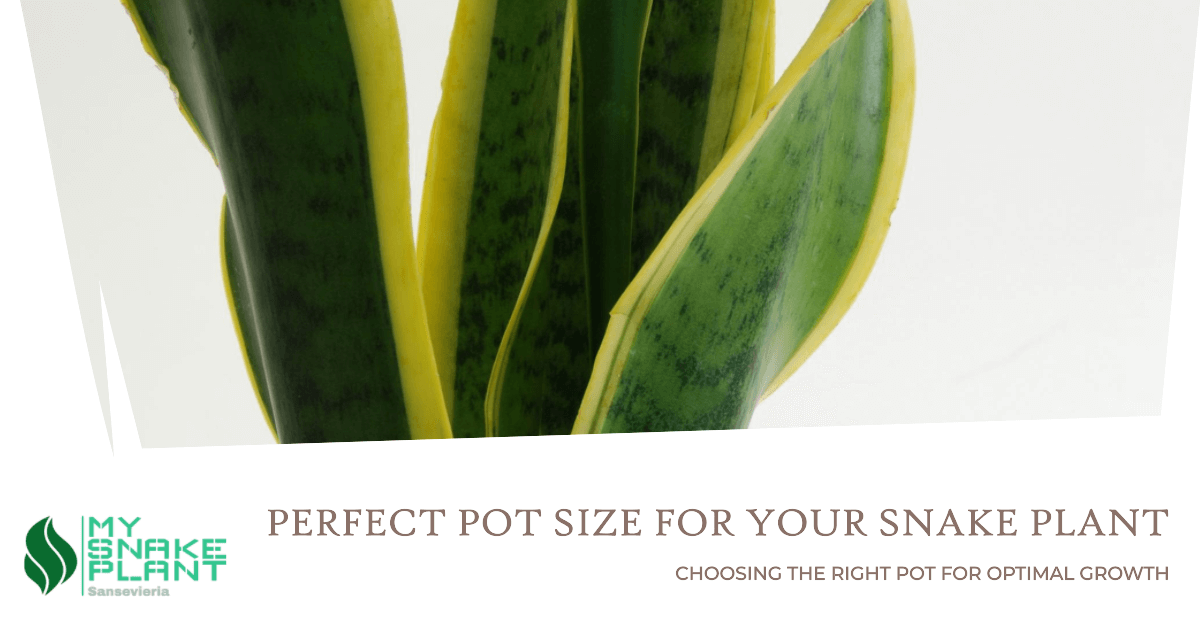
Best Pot Size for Snake Plant
The ideal pot size depends on the plant’s current size. Typically, snake plants can thrive in pots ranging from 4″ to 18″. When you are going to repot, try going for a pot that’s 1-2″ larger than the one you are using right now. For instance, if your plant is in a 6″ pot, opt for a 7-8″ pot for repotting. If you think you might forget about repotting and remember when it’s too late, it might be all right to go for a pot a bit larger than the mentioned number.
Signs Your Snake Plant is Root-Bound
Sometimes, especially if you have forgotten to repot your plant or the size of the pot has been too small to allow proper growth of the root, root-bound can happen. When it happens, the root gets entangled in itself, making it much harder to change the pot later or preventing it completely. Also, it can slowly suffocate and kill the plant. That is why potting a snake plant on time is important. If your snake plant exhibits any of the following signs, it might be root-bound:
- Droopy Leaves: A clear indication of stress.
- Soil Dries Up Quickly: The roots might be consuming water faster than usual.
- Stunted Growth: The plant isn’t getting the space it needs to grow.
- Yellow or Brown Leaves: A sign of root stress or damage.
- Roots Emerging from Drainage Holes: The plant is searching for more space.

Conclusion Best Soil for Snake Plant
In conclusion, when it comes to growing plants, the soil is one the most important things to consider for it provides the nutrients and determines how much water the plant is getting. It is imperative to choose the right soil for your snake plant so its health and growth won’t be hampered. By understanding the plant’s needs providing the best soil conditions and choosing the right soil combination for your plant, you can ensure your snake plant thrives for years to come.
FAQs
- Can I use regular potting soil for my snake plant?
- While snake plants are adaptable, it’s best to use a well-draining soil mix to prevent root rot. It’s best to consider both water drainage and the nutrient needs of your snake plant and keep an eye on its variation.
- How often should I repot my snake plant?
- Snake plants grow slowly, so you can repot them every 2-3 years or when they outgrow their current pot. Depending on the variation and how ideal their condition is, this may vary. It’s also important how much room there is in the new pot so that under the same circumstances, a smaller pot might require you to repot the snake plant earlier and a bigger pot can allow your snake plant to grow for a longer time before having to repot it.
- Do snake plants need direct sunlight?
- No, snake plants prefer indirect sunlight and can even tolerate low light conditions. Depending on the variety, the amount of sunlight needed is different, but all of them will require indirect sunlight.
- How can I tell if I’m over-watering my snake plant?
- Signs of over-watering include yellowing leaves, a mushy base, and a moldy smell. If you feel like your snake plant isn’t looking the way it should be, you are probably over-watering.
- Can snake plants purify the air?
- Yes, snake plants are known to remove toxins like formaldehyde and benzene from the air, making them excellent air purifiers. They are also, according to research conducted by Oxford University, one of the best indoor plants for increasing oxygen levels and reducing that of CO2.


